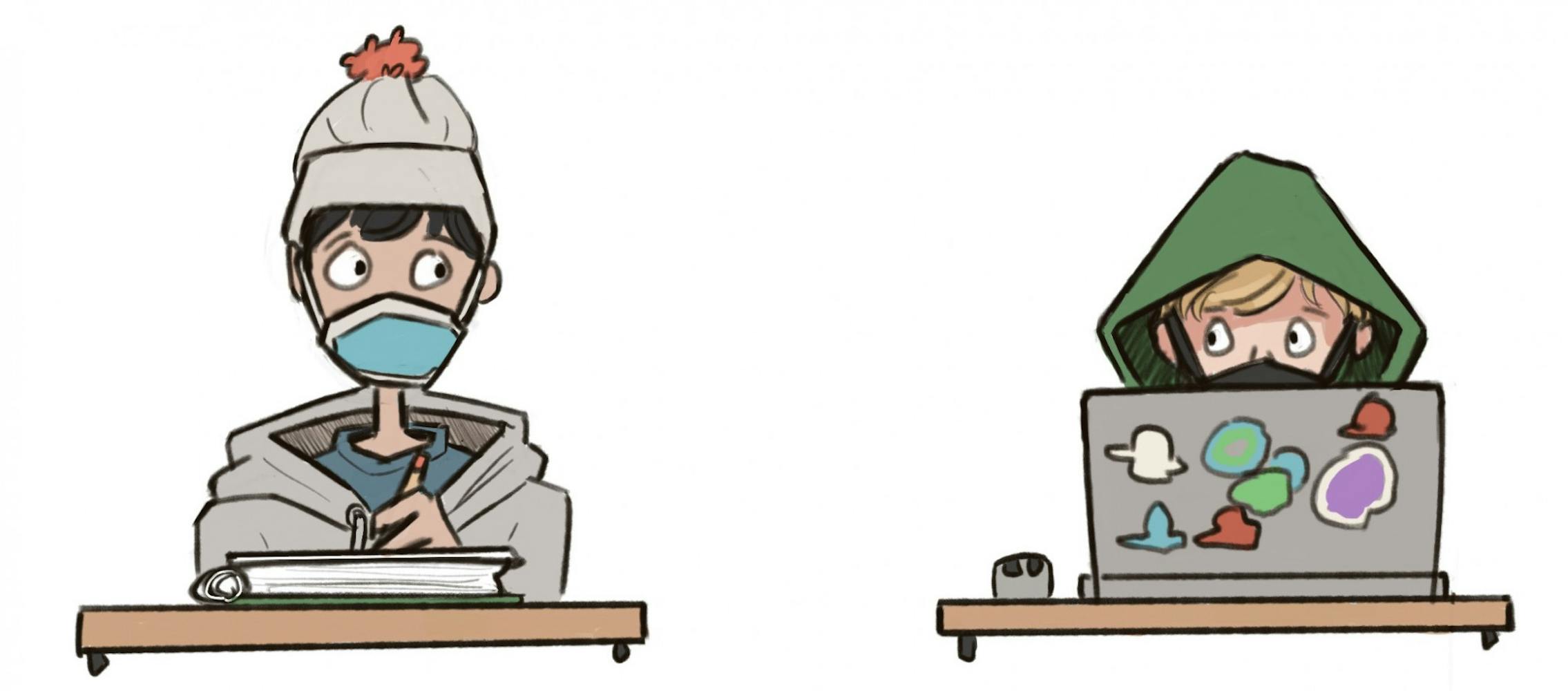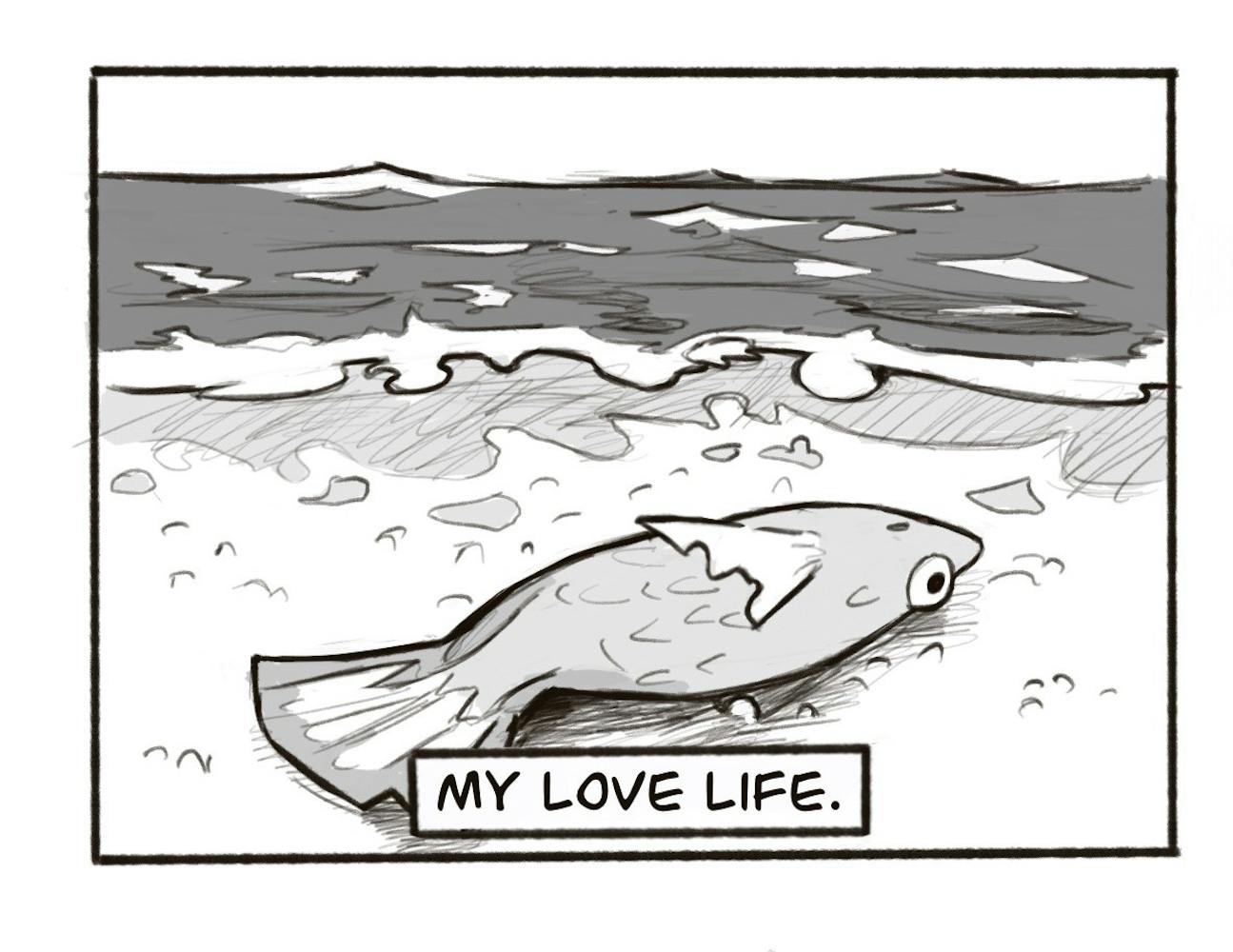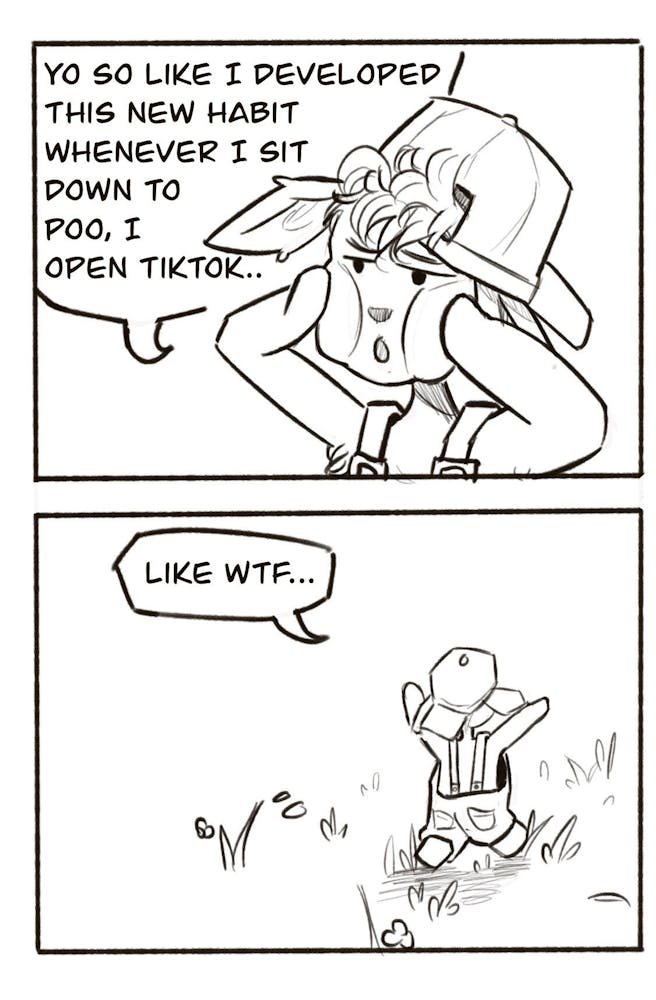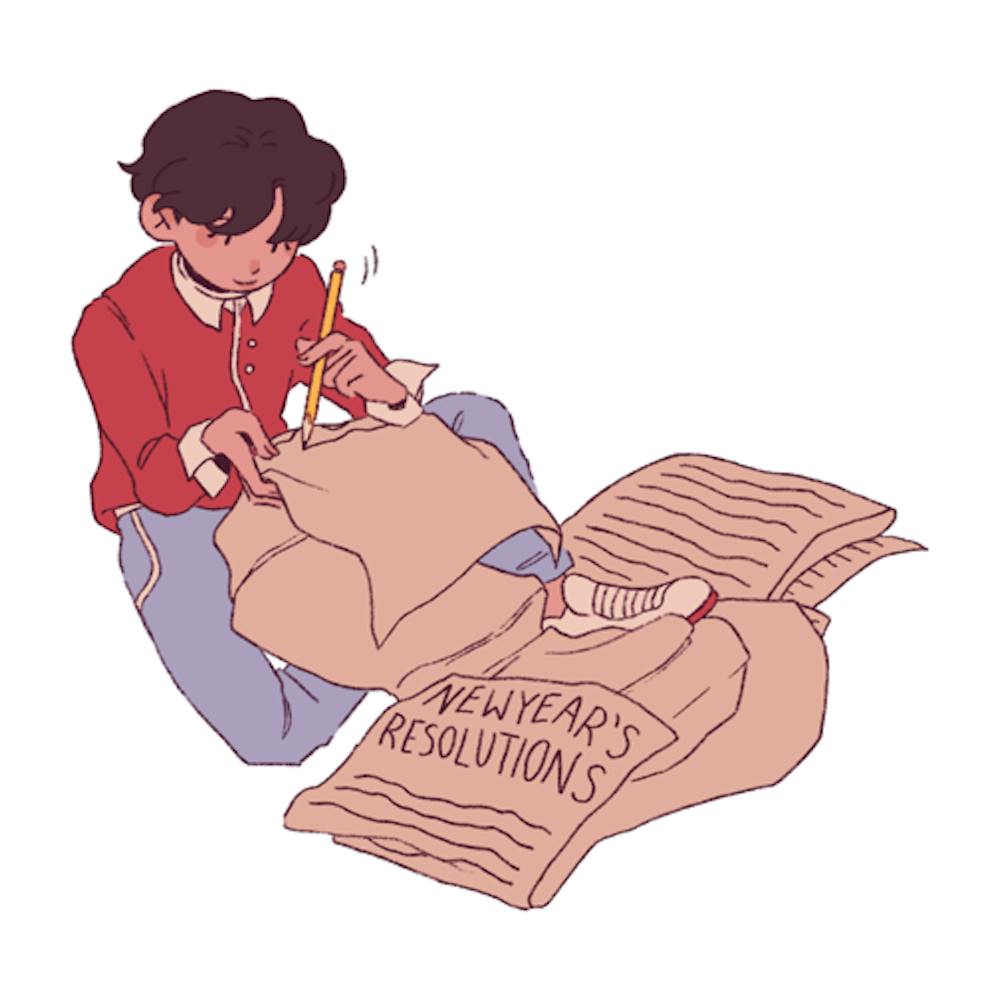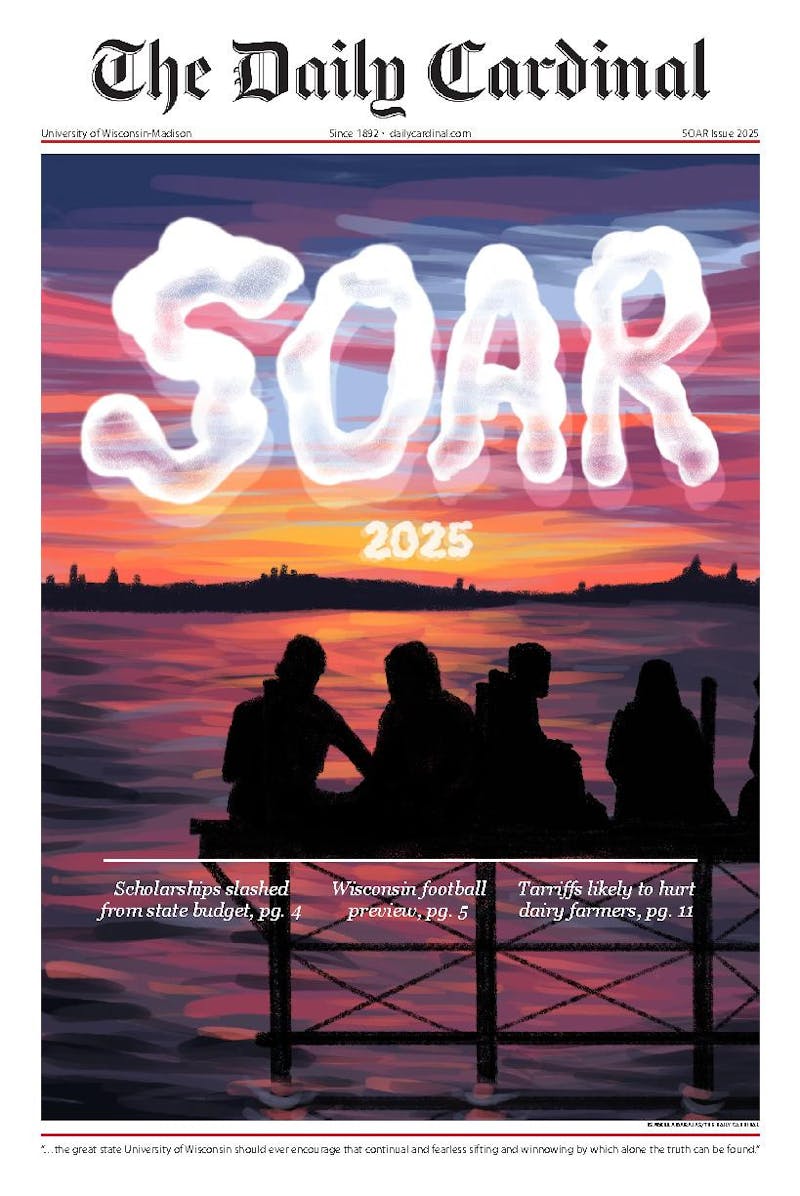This semester, UW-Madison is offering a mix of remote and in-person courses to its over 45,000 enrolled students both on and off-campus.
In-person classes continue to adhere to public health guidelines regarding physical distancing and mask-wearing while seating no more than 50 students, but often fewerless. Students attending in-person classes and living in the Madison area also have to maintain their COVID-19 testing schedule as they will have to show their Badger Badge in the Safer Badgers app to enter campus spaces starting Feb. 10 according to a Wednesday email to the campus community.
Nete Schmidt, a Faculty Associate in the German, Nordic and Slavic+ Department opted to hold some of her courses in-person this semester.
“Since we switched to online classes, I have been impressed with the resilience, resourcefulness and dedication of my students,” said Schmidt.
“Even though it is easy to have small group discussions in various ways — thanks to all our technology and help with technology — I still prefer being with my students and sharing the ambiance of a classroom,” said Schmidt, describing her weariness about continuing to hold lectures online. “While it is not a return to normalcy, it resembles a more normal classroom situation where we are all together as physical persons rather than presences on a screen.”
When determining whether to hold her classes in-person, Schmidt considered three main components: direct student engagement, participation and interaction.
“I decided that I would prioritize student presence in the classroom,” said Schmidt. “I am very grateful for the fact that we can easily maintain safe distances and that all students are wearing masks, sanitizing and taking the situation seriously.”
Schmidt acknowledged that although trying to accommodate all students, she is aware that she is excluding some students from her classes given the current situation.
International students, unable to enter the United States, as well as students uncomfortable with coming to campus due to COVID-19, are among those unable to take courses happening in-person.
“Some students have dropped my classes this past week,” explained Schmidt. “They shared their concerns about feeling unsafe in buses or on campus, and I completely respect their choices.”
The most common worry expressed by instructors regards the overall health and well-being of students, according to John Zumbrunnen, the Vice Provost of Teaching and Learning and a Professor in the Department of Political Science.
Schmidt is addressing the looming issue of isolation and quarantine periods that may affect students by maintaining “the benefit of the full classroom instruction” for those unable to attend class because of a positive COVID-19 result or close contact with someone who has contracted the virus.
Acknowledging that this accommodation may be perceived as a hybrid-model, Schmidt instead regards it as “added personal communication” with the students including virtual office hours.
Some students, like sophomore Emma Dahl, have experienced issues with accommodations for in-person classes due to COVID-19. Both she and her roommate are currently trying to isolate themselves after a recent exposure to someone who has tested positive for COVID-19, affecting Dahl’s ability to attend an in-person class.
“We have been told since the start of this virus that if you are exposed to someone, you need to isolate yourself to protect others from an increase in the spread,” explained Dahl. “While this is a wonderful practice in theory, having in-person classes that are not recorded or live streamed is putting students in a situation where they must choose between their education and the health and wellness of others.”
University guidance advises professors and instructors to be flexible with students in situations relating to COVID-19 that either prohibit them from attending in-person classes or participating in remote courses — ultimately supporting students’ academic progress through “flexible learning activities” as the issue arises.
Unlike Schmidt’s plans for modifications, Dahl’s professor has made it clear that there is no scenario in which the lectures and in-class materials will be posted online.
A recent post from a class discussion forum — posted by the professor of Dahl’s course — reads: “We will not be providing video recordings of any in-person lectures that you may not be able to attend … [and] we are unable to accommodate requests for making these recordings available for today’s in-person lectures or future lectures.”
“I personally think that it is scary to think students might be sitting next to me in class after being exposed because they were afraid of missing a lecture,” said Dahl, who has been getting testing often to try and detect if she has contracted the virus from her recent exposure.
“I am overjoyed with the possibility of in-person classes.,” emphasized Dahl. “It finally feels like school again,” said Dahl. “What I do mind is not giving students the option to stay home if they feel ill or have been around someone who is ill.”
Despite the issues and limitations associated with the recent resumption of in-person classes, Schmidt — like Dahl — is eager to be back in the classroom.
“I have enjoyed seeing students, faces and eyes, and it has been great to have students engaging actively in class-discussions, even class group-work where they still keep their distance but also manage to form small groups,” emphasized Schmidt. “It has been truly energizing, and I sincerely hope it will continue this way.”
Chancellor Blank and Provost and Vice Chancellor for Academic Affairs Karl Scholz continue to stress that regardless of the mode of instruction, establishing relationships between students and instructors is motivating and makes learning much more engaging and meaningful, according to a Jan. 7 letter.
“We have learned that remote instruction should not simply involve teaching the same course in the same way via a digital tool,” the letter reads. “Remote instruction often requires restructuring a course and making changes in teaching style.”
Zumbrunnen agrees that modification to instruction — both on and offline — is required given the circumstances of COVID-19.
“We’re working this semester to encourage instructors to explore new ways to build engagement and interaction — and we’re hearing about some very innovative and meaningful ways that instructors and students are connecting in courses,” said Zumbrunnen.
As of Wednesday, according to the UW COVID Response Dashboard there was a 0.7% average positivity rate over the past seven days, with an average of 33.6 new cases per day.
According to the Jan. 7 letter from university officials, the university is planning for the resumption of in-person classes next fall. Completely remote instruction will not be offered as an option as the university seeks to pivot back to primarily in-person instruction.
“We’re not simply going to return to the old normal,” Zumbrunnen said. “Some things will be different, and better. But in-person interaction and engagement are still going to be at the core of a UW-Madison education.”
Although an emphasis on in-person instruction will be at the forefront looking forward, some courses may remain online, according to Zumbrunnen.
“We fully expect [instructors] to carry forward what they’ve learned, enriching in-person courses with new elements, exploring blended or flipped pedagogies in some classes and, no doubt, finding that some courses are, for pedagogical reasons, good candidates for online education in the future,” he explained.
With this in mind, Schmidt looks to the rest of the spring semester and next fall with anticipation — wholeheartedly hoping that the pandemic will be curtailed, allowing in-person instruction to continue.
“I truly hope we can build the community that I find to be an essential part of the university,” she stressed.
Sophia Vento is a former editor-in-chief of The Daily Cardinal. She previously served as the college news editor. She has covered breaking, campus, city, state and sports, and written in-depth stories about health, culture and education. She previously interned with the Milwaukee Journal Sentinel. Any newsroom would be lucky to have Sophia on staff. Follow her on Twitter at @sophiasvento.

